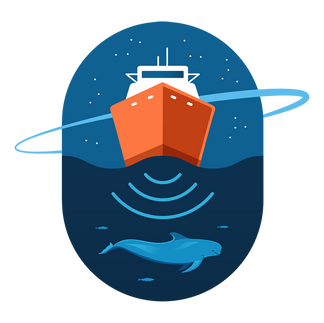Keeping Up To Date With Our Partners At TIHO
- orlapeachpower
- Apr 9, 2024
- 3 min read
Updated: Apr 25, 2024
By Dominik André Nachtsheim, Jeff Schnitzler, Nina Maurer, Joy Ometere Boyi, Luca Aroha Schick and Maria Morell (TIHO)

Graphical abstract for Scientific Reports paper (Image Credit: Nachtsheim et al., 2023).
In close collaboration with Aarhus University, researchers at the Institute for Terrestrial and Aquatic Wildlife Research at the University of Veterinary Medicine Hannover (TIHO) have developed an automated tool to detect events of elevated underwater noise in animal-borne sound recordings and subsequently identify vessel passes. The development of an automated workflow has been essential to efficiently process sound data from tag deployments lasting over several days and weeks. The tool was applied to quantify vessel noise exposures from previous deployments of DTAGs on nine harbour seals from the Wadden Sea. The work was published in Scientific Reports and revealed that harbour seals are repeatedly exposed to vessel noise, on average four times per day. Another major discovery was that only one third of the encounters could be reasonably attributed to a nearby AIS-registered vessel identified from publicly accessible AIS databases. This finding emphasises the importance of using DTAGs as noise dosimeters to quantify vessel noise exposures and demonstrates that AIS data are an insufficient predictor of vessel noise impacts.
Publication Details
Nachtsheim, D.A., Johnson, M., Schaffeld, T., van Neer, A., Madsen, P.T., Findlay, C.R., Rojano-Doñate, L., Teilmann, J., Mikkelsen, L., Baltzer, J., Ruser, A., Siebert, U., & Schnitzler, J.G. (2023). Vessel noise exposures of harbour seals from the Wadden Sea. Scientific Reports 13.
Furthermore, TIHO researchers have deployed additional 3 DTAGs on harbour seals in the Elbe estuary within the frame of SATURN. Data analysis is still ongoing but initial assessments clearly show that these seals live in a highly industrialised habitat with a high degree of maritime traffic. They are exposed to vessel noise much more frequently than seals outside the estuary. The implications of living in this noisy habitat, especially in light of increased disturbances and related fitness consequences, are still subject of investigations.
In this context, the health investigations on the tagged harbour seals become extremely valuable. TIHO researchers have performed clinical health assessments on all tagged harbour seals from the Elbe as well as on the previous deployments in the Wadden Sea.
TIHO researchers Luca Schick and Joy Boyi collecting samples from seals.
A focus of current work is the examination of the relationship between the health status, characterized by blood chemistry and novel biomarkers, and the movement behaviour of free-ranging seals. For the first time in marine mammals, TIHO researcher Joy Boyi used the biomarker Prestin to describe recent high sound exposure in harbour seals and found a correlation with HSP70, indicating increased stress levels in harbour seals. Preliminary findings also indicate that movement patterns indeed differ among individuals with different health conditions. The next steps will focus on integrating noise exposures in a multidisciplinary approach to improve the understanding of the complex interactions between health status, external stressors, such as underwater noise, and behaviour.
Pictured attending BLS8 are SATURN researchers Dominik Nachtsheim (Left) and Nina Maurer (Right).
These research topics were recently featured at the 8th International Bio-Logging Science Symposium (BLS8), which was held from 4-8 March 2024 in Tokyo, Japan. Here, SATURN researchers Nina Maurer and Dominik Nachtsheim presented research posters highlighting the results of their research on harbour seal telemetry, vessel exposures, and health.


















Comments